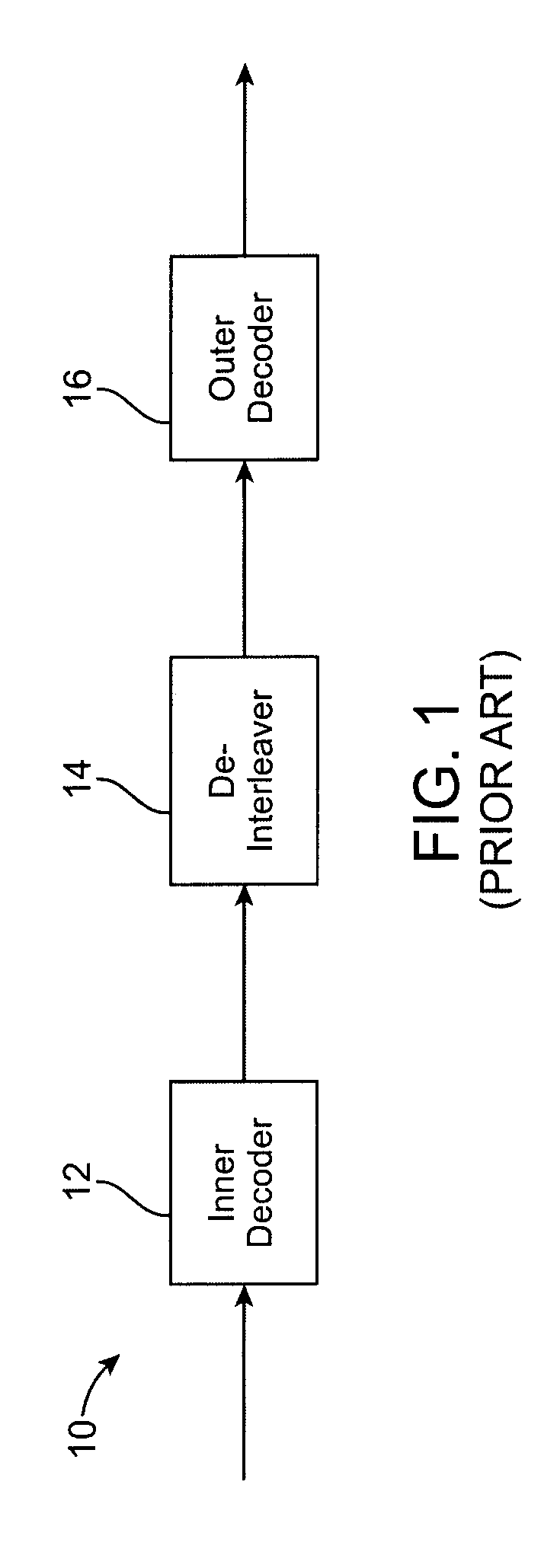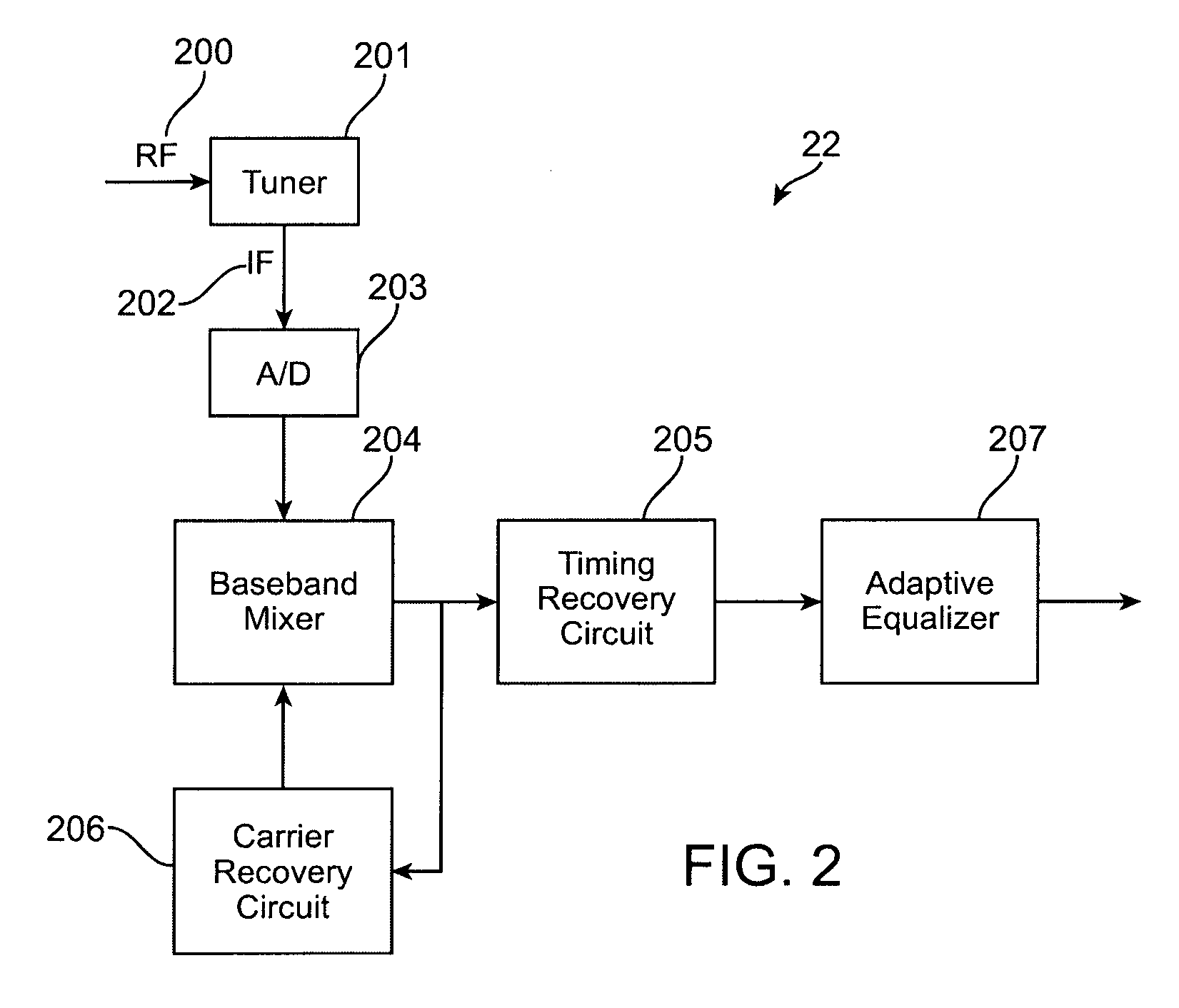Diversity combining iterative decoder
a decoder and diversity technology, applied in the field of wireless digital communication systems, can solve the problems of inability to match the performance, limited approach, unusable signals for receivers, etc., and achieve the effect of reducing the probability of error of output signals and less errors
- Summary
- Abstract
- Description
- Claims
- Application Information
AI Technical Summary
Benefits of technology
Problems solved by technology
Method used
Image
Examples
Embodiment Construction
[0034]To overcome the limitations in the prior art described above, and to overcome other limitations that will become apparent upon reading and understanding the present specification, the present invention discloses an apparatus and method for decoding a signal received from an antenna or from multiple antennas using iterative decoding techniques to cause reduced bit-error rate at low signal to noise ratios while reducing memory requirements. Noise, as used herein, refers to undesirable data or data that is not supposed to be a part of the signal that was transmitted and sought to be received, rather it is without meaning.
[0035]These and various other advantages and features of novelty which characterize the invention are pointed out with particularity in the claims annexed hereto and form a part hereof. However, for a better understanding of the invention, its advantages, and the objects obtained by its use, reference should be made to the drawings which form a further part hereo...
PUM
 Login to View More
Login to View More Abstract
Description
Claims
Application Information
 Login to View More
Login to View More - R&D
- Intellectual Property
- Life Sciences
- Materials
- Tech Scout
- Unparalleled Data Quality
- Higher Quality Content
- 60% Fewer Hallucinations
Browse by: Latest US Patents, China's latest patents, Technical Efficacy Thesaurus, Application Domain, Technology Topic, Popular Technical Reports.
© 2025 PatSnap. All rights reserved.Legal|Privacy policy|Modern Slavery Act Transparency Statement|Sitemap|About US| Contact US: help@patsnap.com



